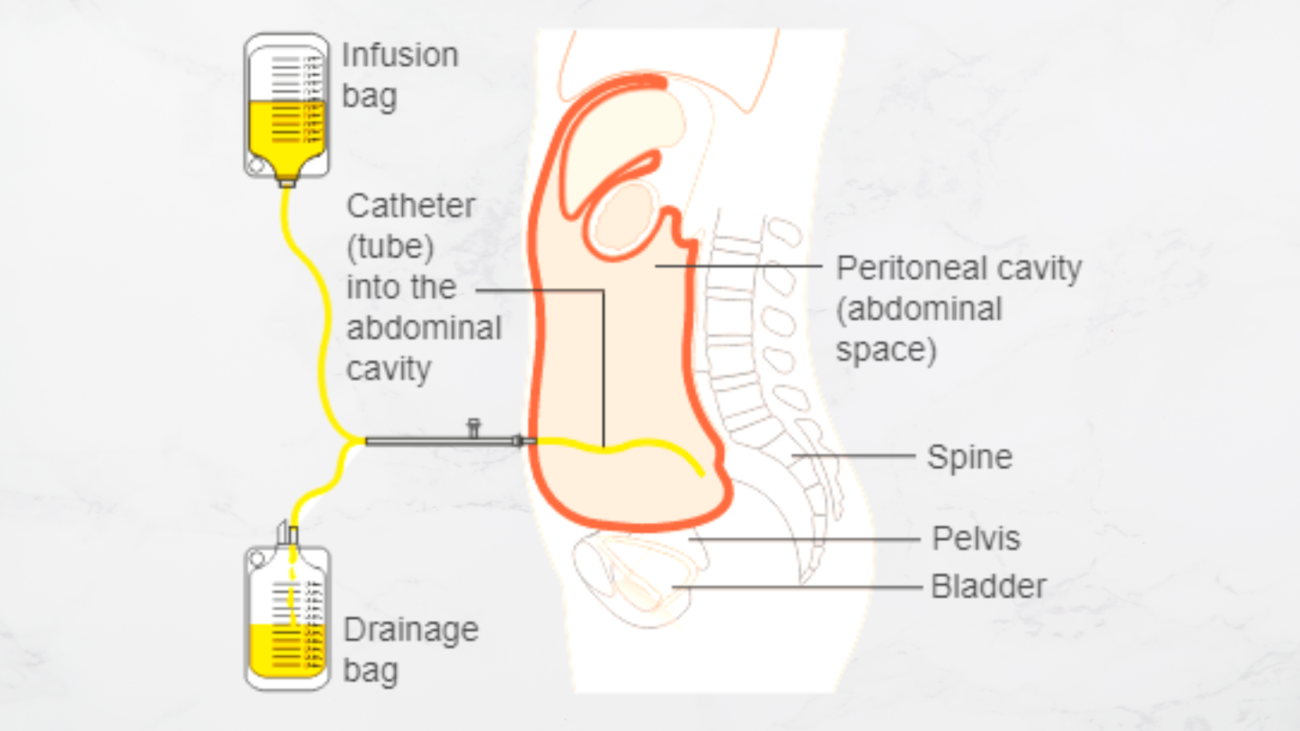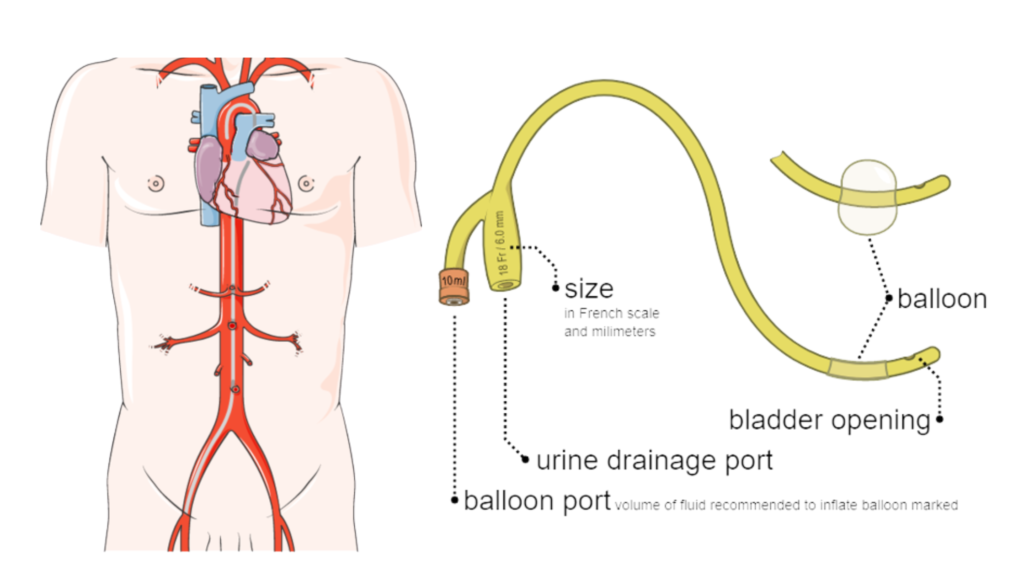A urinary catheter is a tube that is inserted into the body in order to drain and collect urine from the bladder. Urinary catheters are used to drain the bladder, and they may be prescribed if:
Incontinence of the bladder (leaking urine or being unable to control when you urinate) Retention of urine (being unable to empty your bladder when you need to), Prostatectomy or genital surgery
Other medical conditions to consider include multiple sclerosis, spinal cord injury, and dementia.
What is Urinary Catheterization?
Urinary or Bladder catheterization is a procedure that is routinely performed in all health care facilities. It can be done using external, urethral, or suprapubic techniques. It is linked to complications such as urinary tract infection, which is the most common hospital-acquired infection.
Urinary catheters are the most commonly used method globally, and emphasizes the role of an interprofessional healthcare team in improving care for patients who undergo urethral catheterization.
In this blog post, we will discuss the types of urinary catheterization, the indications and their various complications.
Types of Urinary Catheters
Urinary catheters are divided into three types depending on the method of Insertion. The three types of Urinary Catheters are based on the method of insertion. The urinary catheter can be External Catheter (condom catheter), intermittent (short-term) or indwelling depending on the dwell time (long-term).
1. External Catheters (Condom Catheter)
External catheters are condom-like sheaths that are wrapped around the penis and attached to a drainage bag. External catheters collect urine by adhering to the external genitalia in men or the pubic area in women.
It is mainly used to collect urine in individuals who have urinary incontinence. The most commonly used ECs are disposable and must be replaced every 24 to 48 hours. They are beneficial in the treatment of urinary incontinence.
2. Indwelling urinary catheters (Urethral or Suprapubic Catheters)
An indwelling urinary catheter is inserted similarly to an intermittent catheter, but it is left in place. A water-filled balloon holds the catheter in place in the bladder, preventing it from falling out.
A valve is sometimes attached to indwelling catheters. This valve can be opened to drain urine into a toilet and closed to fill the bladder with urine until drainage is convenient.
Most indwelling catheters must be changed at approximately once every three months. Health problem such as urinary incontinence (leakage), urinary retention (inability to urinate), are all common reasons for having an indwelling catheter
b. Urethral catheters
Urethral catheters are inserted through the urethra and advanced to the bladder’s base. The size, shape, number of ports, and material of urethral catheters can all vary.
Catheters can be straight or curved. Urethral catheterization is a common medical procedure that allows for direct urinary bladder drainage.
b. Suprapubic catheters:
A suprapubic catheter is a flexible, hollow tube used to drain urine from the bladder. It is inserted into the bladder via a tummy cut a few inches below the navel (tummy button). This is performed under local or light general anesthesia. Suprapubic catheters are surgically inserted into the bladder through a suprapubic approach.
3. Short-Term (Intermittent)
In certain scenarios, a catheter might only be required for a brief time following surgery, up until the bladder empties. The short-term catheter must be removed after the bladder empties. It is known as an in-and-out catheter among medical professionals.
People are taught how to insert the catheter in a home setting, either by themselves or with assistance from a caregiver. This same procedure can be carried out either through the urethra or a catheterization hole drilled into the lower abdomen.
Indications for Urinary Catheterization and the Various Complications
Urinary catheterization is a standard medical procedure used to relieve urinary retention, allow complete emptying of the bladder, and monitor urine output. It can be performed using a number of different techniques, but several potential complications can occur. Here we will discuss the indications for urinary catheterization and the various complications.
Indications of urinary catheterization include:
-Acute urinary retention:
This is the most common indication of urinary catheterization. Urinary retention is when a person is unable to empty their bladder. This can be due to a variety of reasons, including an obstruction (such as a kidney stone), an enlarged prostate, or nerve damage.
-Chronic urinary retention:
This is when a person cannot empty their bladder on their own. This can be due to an obstruction, such as an enlarged prostate, or a neurological condition that affects the nerves that control urination.
-Inability to empty the bladder:
This may be due to an obstruction, such as prostate enlargement or bladder cancer.
-Urine output measurement in critically ill patients:
To monitor urine output in critically ill patients, a catheter is placed to measure the amount of urine produced.
-Chronic urinary retention:
This is defined as an inability to empty the bladder. Patients with chronic urinary retention may experience urinary frequency, urgency, and incontinence.
-Urinary tract infection:
A urinary tract infection (UTI) is a common reason for catheterization. UTIs can cause pain and burn with urination and cloudy or bloody urine.
-Preparation for surgery:
Surgery involving the urinary tract or prostate gland may require that the bladder be empty during the procedure.
-Postoperative care:
Urinary catheterization is often performed after surgery to help patients recover without worrying about urinating on their own.
Complications of urinary catheterization include:
Urinary tract infection: The most common complication of urinary catheterization is mainly when the catheter is left in place for a long time.
-Blood in the urine:
Hematuria (blood in the urine) is the most common complication of urinary catheterization. It occurs in about 1 out of every 100 people who have a urinary catheter placed.
-Kidney damage:
The most common complication of a urinary catheter is damage to the kidneys. The long-term use of a urinary catheter can increase the risk of kidney damage and kidney stones.
-Blockage of the catheter:
If the catheter becomes clogged with urine, blood, or debris, it can happen. It can also occur if the catheter kinks or bends.
-Pain or discomfort at the insertion site:
You may feel a sharp pain when the catheter is inserted. Afterward, you may have milder pain and tenderness around the urinary opening.
If you are experiencing any of the above symptoms, please consult your doctor. Urinary catheterization is a safe and effective procedure performed by a trained healthcare professional.
Equipment used for Urinary catheterization
Urinary catheterization requires the following equipment:
- Catheter
- Catheter bag
- Sterile gloves
- Sterile water
- Single-use lubricant and anaesthetic gel
- Waterproof pad (disposable)
FAQS:
1. What is a urinary catheter?
A urinary catheter is a small, hollow tube inserted into the bladder to drain urine.
2. How is a urinary catheter inserted?
A urinary catheter is usually inserted through the urethra (the tube that drains urine from the bladder) using a syringe.
3. How long does a urinary catheter stay in place?
A urinary catheter can stay in place for days, weeks, or even months. It will be removed when it is no longer needed.
4. Are there any risks associated with urinary catheterization?
There are some risks associated with urinary catheterization, such as infection or bleeding. However, these risks are usually low.
5. Will I feel anything during the procedure?
You may feel some discomfort when the catheter is inserted. However, you should not feel any pain during the procedure.
6. How will I know if the catheter is in place?
You will be able to feel the catheter in your bladder. You may also see urine draining from the catheter into a bag.
7. Can I go home after the procedure?
Yes, you can usually go home after the procedure. However, you may need to stay in the hospital if you have certain medical conditions.
8. What are the complications of urinary catheterization?
The most common complication is infection. Other complications include bleeding, pain, and damage to the urethra.



